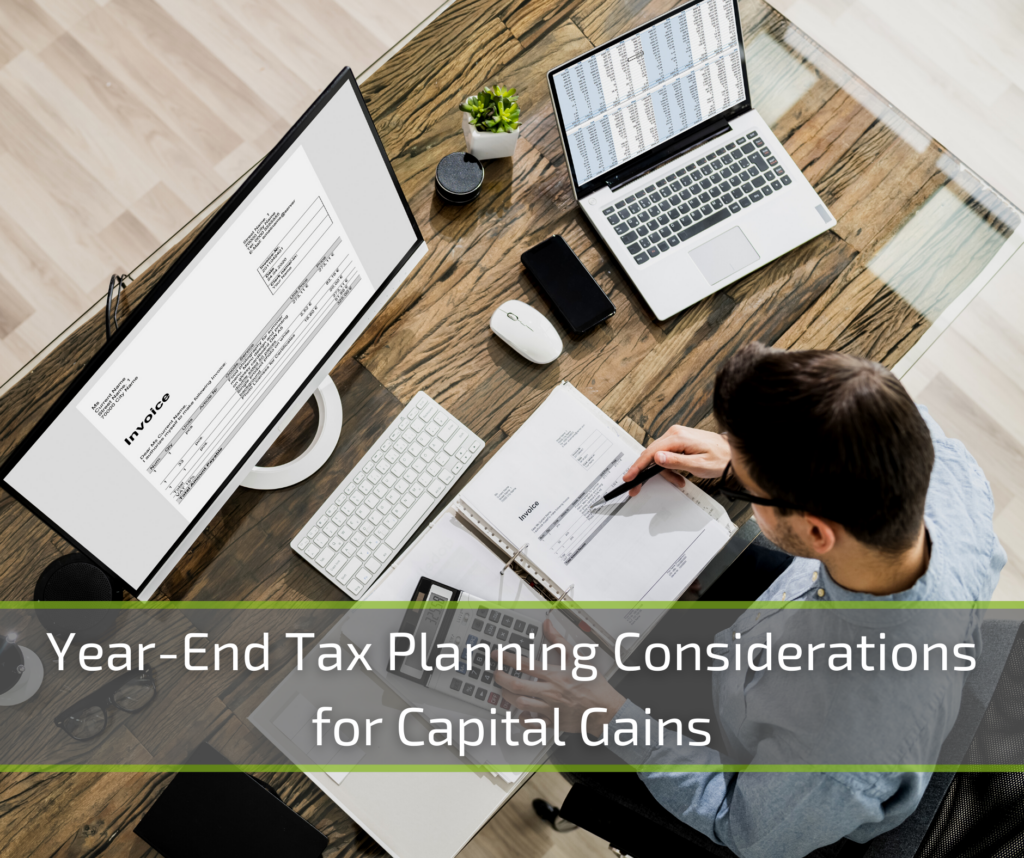As the end of the year approaches, investors need to focus on tax-related considerations, particularly regarding capital gains. Year-end tax planning can help investors manage their overall tax liability while seeking to manage investments for suitable tax outcomes. In this article, we explore four key tax planning areas for capital gains: what it is, tax law changes, tax efficiency, and offsetting capital losses.
Understanding Capital Gains
First, having a good understanding of the concept of capital gains is crucial. In simple terms, a capital gain is the increase in value of an investment or real estate beyond its purchase price. However, this gain is unrealized until the investment sells. The resulting profit from a sale is taxed at a rate that depends on how long the investment was held. Capital gains taxes apply only to capital assets, which include stocks, bonds, digital assets like cryptocurrencies and NFTs, jewelry, coin collections, and real estate.
The current tax law provides for two types of capital gains: short-term capital gains for assets held for less than one year and long-term capital gains for assets held longer than one year.
Be Aware of Tax Laws
Tax law changes must be an essential part of your year-end planning because it determines the amount of taxes you may be obligated to pay. Financial and tax professionals can help you prepare for recent tax law changes that may impact your situation.
For the 2023 tax year, individual filers won’t pay any capital gains tax if their total taxable income is $44,625 or less. The rate jumps to 15 percent on capital gains if their income is $44,626 to $492,300. Above that income level, the rate climbs to 20 percent.
For 2024, it’s anticipated that the capital gains rates will not change, but the income brackets for the rates will change.
Tax-efficiency
A key element of tax planning is understanding and implementing strategies to help minimize taxes. One tax-efficient strategy involves timing the sale of your assets to help capitalize on the federal tax code’s distinction between long-term and short-term capital gains. For example, if an investment has been held for one year and one day, it qualifies for the lower long-term capital gains rate. Depending on the situation, an investor may hold off on selling an investment if approaching that one-year mark since doing so may help lower their overall tax bill.
Focusing on tax-efficient investing is also vital. Tax-efficient investing involves using strategies designed to help manage tax liability. These strategies may include investing in tax-efficient fund options, index funds and exchange-traded funds (ETFs), or asset location – a strategy that involves placing investments that may generate more taxable income into tax-advantaged accounts.
Offsetting Capital Losses
Capital loss offsetting is another component of the year-end tax planning strategy. Capital losses result when you sell an investment for less than what you paid. The losses can then be used to offset capital gains to help manage the overall taxable income. Be mindful, however, that the IRS has restrictions on “wash sales,” which occur if you sell a security at a loss and then buy the same or substantially identical security within 30 days before or after the sale.
In conclusion, year-end tax planning is essential for managing capital gains. Discussing your situation with financial and tax professionals can help mitigate your tax liability and potentially increase your investment’s net return. Remember, the key is not only about how much your investments earn but also how much you keep after taxes.
Important Disclosures:
The opinions voiced in this material are for general information only and are not intended to provide specific advice or recommendations for any individual. To determine which investment(s) may be appropriate for you, consult your financial professional prior to investing.
An investment in Exchange Traded Funds (ETF), structured as a mutual fund or unit investment trust, involves the risk of losing money and should be considered as part of an overall program, not a complete investment program. An investment in ETFs involves additional risks such as not diversified, price volatility, competitive industry pressure, international political and economic developments, possible trading halts, and index tracking errors.
This information is not intended to be a substitute for specific individualized tax advice. We suggest that you discuss your specific tax issues with a qualified tax advisor.
All information is believed to be from reliable sources; however, LPL Financial makes no representation as to its completeness or accuracy.
This article was prepared by Fresh Finance.
LPL Tracking #491273-04
Sources: https://www.investopedia.com/terms/c/capital_gains_tax.asp https://www.investopedia.com/articles/personal-finance/101515/comparing-longterm-vs-shortterm-capital-gain-tax-rates.asp https://www.bankrate.com/investing/long-term-capital-gains-tax/#short-vs-long https://www.forbes.com/sites/kellyphillipserb/2023/09/26/your-first-look-at-2024-tax-rates-projected-brackets-standard-deduction-amounts-and-more/?sh=6e364e4174bb

